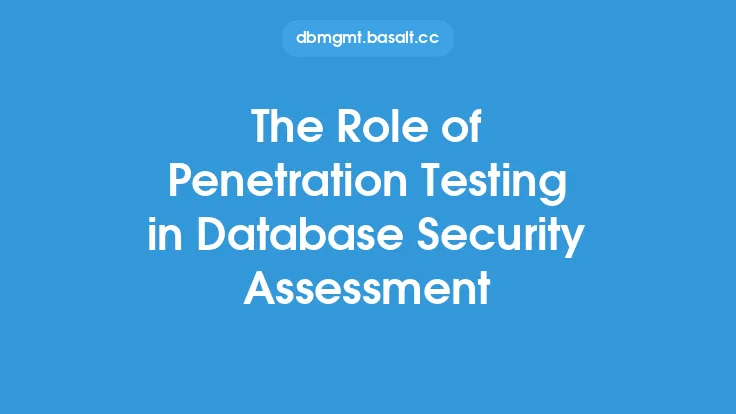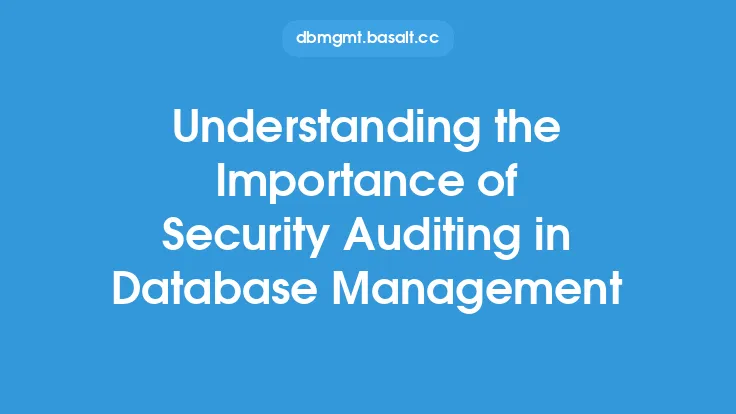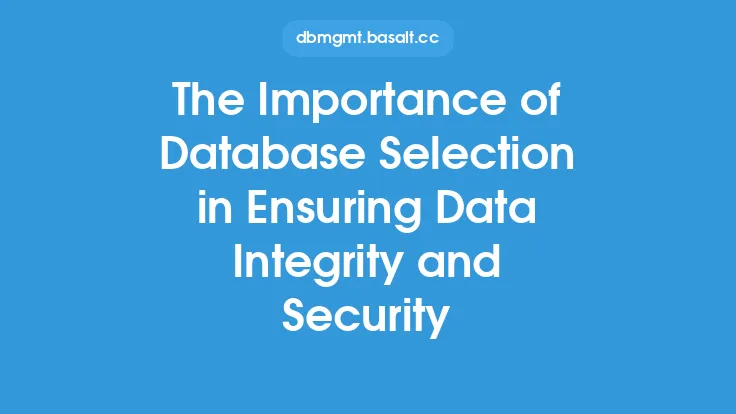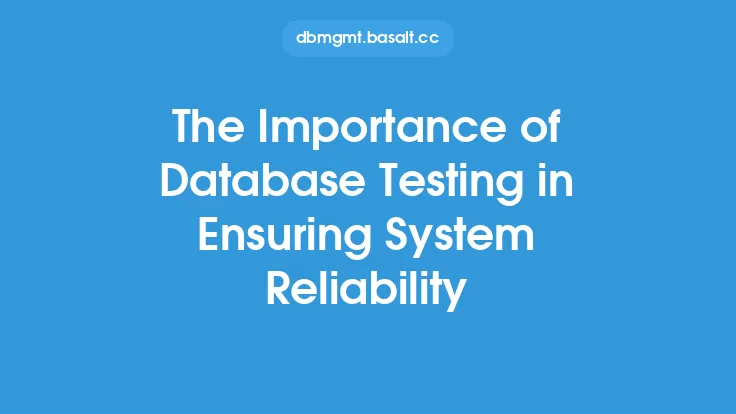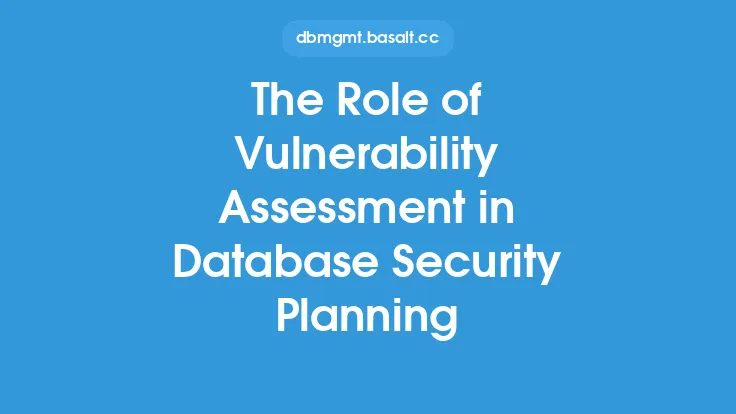In today's digital landscape, databases are the backbone of any organization, storing sensitive information that is crucial to its operations. As such, ensuring the security of these databases is paramount. One of the most effective ways to achieve this is through penetration testing, a simulated cyber attack against a database to assess its defenses. Penetration testing, also known as pen testing or ethical hacking, is a systematic process that involves attempting to breach a database's security controls to identify vulnerabilities, weaknesses, and potential entry points that an attacker could exploit.
Introduction to Penetration Testing
Penetration testing is a proactive approach to database security that helps organizations stay one step ahead of potential threats. By simulating real-world attacks, penetration testers can identify areas where a database's security may be lacking, allowing for remediation before a malicious attacker can exploit these vulnerabilities. This process involves a thorough analysis of the database's architecture, configuration, and security controls, as well as the use of various tools and techniques to attempt to breach its defenses. The goal of penetration testing is not to cause harm, but to strengthen the database's security posture and protect the sensitive data it contains.
Benefits of Penetration Testing in Database Security
The benefits of penetration testing in database security are numerous. Firstly, it allows organizations to identify and remediate vulnerabilities before they can be exploited by malicious attackers. This proactive approach can help prevent data breaches, which can have severe consequences, including financial loss, reputational damage, and legal repercussions. Penetration testing also provides organizations with a comprehensive understanding of their database's security posture, highlighting areas where security controls may be lacking or ineffective. Additionally, penetration testing can help organizations comply with regulatory requirements and industry standards, such as PCI DSS and HIPAA, which mandate regular security testing and vulnerability assessments.
Types of Penetration Testing
There are several types of penetration testing that can be applied to database security, each with its own unique objectives and methodologies. Black box testing, for example, involves simulating an attack from an external perspective, with the tester having no prior knowledge of the database's architecture or security controls. White box testing, on the other hand, involves testing from an internal perspective, with the tester having full knowledge of the database's architecture and security controls. Grey box testing falls somewhere in between, with the tester having some knowledge of the database's architecture and security controls. Each type of testing has its own advantages and disadvantages, and the choice of which to use will depend on the specific objectives of the test and the organization's security requirements.
Penetration Testing Methodologies
Penetration testing methodologies for database security typically involve a combination of automated and manual testing techniques. Automated testing tools, such as vulnerability scanners and penetration testing frameworks, can be used to identify potential vulnerabilities and weaknesses in the database's security controls. Manual testing techniques, such as social engineering and exploit development, can be used to simulate more complex attacks and test the database's defenses against real-world threats. A thorough penetration test will also involve a detailed analysis of the database's configuration, including its network architecture, user privileges, and security settings.
Common Database Vulnerabilities
Databases are vulnerable to a wide range of attacks, including SQL injection, cross-site scripting (XSS), and privilege escalation. SQL injection, for example, involves injecting malicious SQL code into a database's input fields, allowing an attacker to access, modify, or delete sensitive data. XSS involves injecting malicious code into a database's web interface, allowing an attacker to steal user credentials or take control of the database. Privilege escalation involves exploiting vulnerabilities in a database's security controls to gain elevated privileges, allowing an attacker to access sensitive data or take control of the database. Penetration testing can help identify these vulnerabilities and provide recommendations for remediation.
Penetration Testing Tools and Techniques
A wide range of tools and techniques are available for penetration testing database security, including vulnerability scanners, penetration testing frameworks, and exploit development tools. Vulnerability scanners, such as Nessus and OpenVAS, can be used to identify potential vulnerabilities in a database's security controls. Penetration testing frameworks, such as Metasploit and Burp Suite, can be used to simulate complex attacks and test a database's defenses against real-world threats. Exploit development tools, such as exploit-db and Core Impact, can be used to develop custom exploits for identified vulnerabilities. Social engineering tools, such as phishing kits and pretexting frameworks, can be used to simulate social engineering attacks and test a database's defenses against human-based threats.
Conclusion
In conclusion, penetration testing is a critical component of database security, providing organizations with a proactive approach to identifying and remediating vulnerabilities before they can be exploited by malicious attackers. By simulating real-world attacks, penetration testers can help strengthen a database's security posture and protect the sensitive data it contains. Whether through black box, white box, or grey box testing, penetration testing can provide organizations with a comprehensive understanding of their database's security controls and highlight areas where security may be lacking. As the threat landscape continues to evolve, penetration testing will remain an essential tool for ensuring the security and integrity of databases, and organizations that prioritize this aspect of their security strategy will be better equipped to protect themselves against the ever-present threat of cyber attacks.
